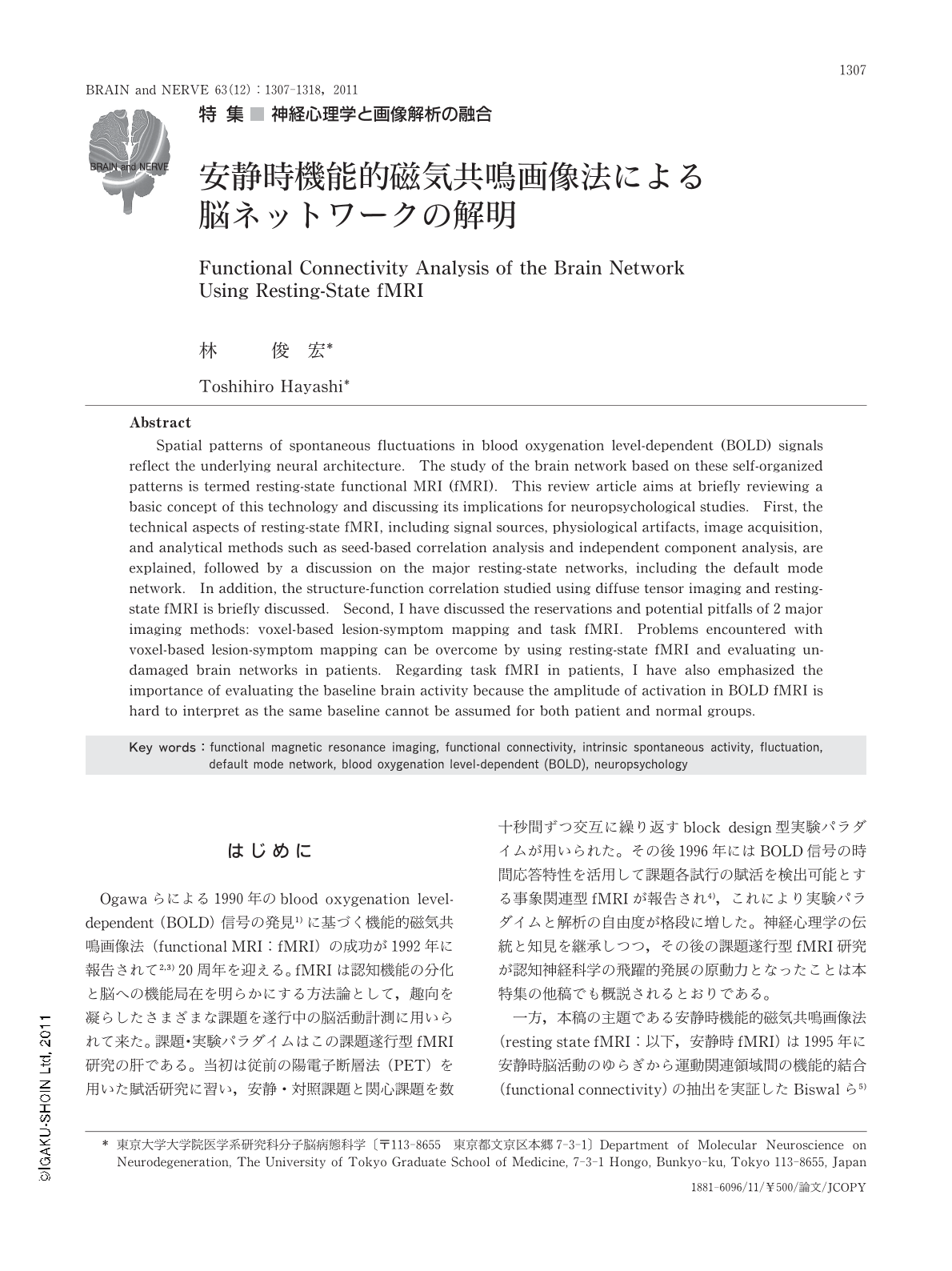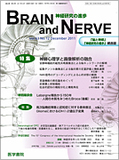Japanese
English
- 有料閲覧
- Abstract 文献概要
- 1ページ目 Look Inside
- 参考文献 Reference
はじめに
Ogawaらによる1990年のblood oxygenation level-dependent(BOLD)信号の発見1)に基づく機能的磁気共鳴画像法(functional MRI:fMRI)の成功が1992年に報告されて2,3)20周年を迎える。fMRIは認知機能の分化と脳への機能局在を明らかにする方法論として,趣向を凝らしたさまざまな課題を遂行中の脳活動計測に用いられて来た。課題・実験パラダイムはこの課題遂行型fMRI研究の肝である。当初は従前の陽電子断層法(PET)を用いた賦活研究に習い,安静・対照課題と関心課題を数十秒間ずつ交互に繰り返すblock design型実験パラダイムが用いられた。その後1996年にはBOLD信号の時間応答特性を活用して課題各試行の賦活を検出可能とする事象関連型fMRIが報告され4),これにより実験パラダイムと解析の自由度が格段に増した。神経心理学の伝統と知見を継承しつつ,その後の課題遂行型fMRI研究が認知神経科学の飛躍的発展の原動力となったことは本特集の他稿でも概説されるとおりである。
一方,本稿の主題である安静時機能的磁気共鳴画像法(resting state fMRI:以下,安静時fMRI)は1995年に安静時脳活動のゆらぎから運動関連領域間の機能的結合(functional connectivity)の抽出を実証したBiswalら5)の報告にさかのぼる。折しも事象関連型fMRIが脚光を浴び始めたころ,撮像中に課題をまったく行わない安静時fMRIは神経活動に由来しない雑音をみているに過ぎないという懐疑論が大勢を占めていた。MRIハードウエアと解析の技術的進歩とも相まって,今や安静時fMRIは脳機能画像研究のホットトピックとなり,脳ネットワークの理論的研究からAlzheimer病のバイオマーカーとしての臨床研究まで幅広い研究が展開されている。本稿では,安静時fMRIとそれを用いた機能的結合研究の成り立ちや信号源と解析法などの基本的事項を中心に概説し,神経心理学や臨床への応用の可能性にも少し触れる。
Abstract
Spatial patterns of spontaneous fluctuations in blood oxygenation level-dependent (BOLD) signals reflect the underlying neural architecture. The study of the brain network based on these self-organized patterns is termed resting-state functional MRI (fMRI). This review article aims at briefly reviewing a basic concept of this technology and discussing its implications for neuropsychological studies. First,the technical aspects of resting-state fMRI,including signal sources,physiological artifacts,image acquisition,and analytical methods such as seed-based correlation analysis and independent component analysis,are explained,followed by a discussion on the major resting-state networks,including the default mode network. In addition,the structure-function correlation studied using diffuse tensor imaging and resting-state fMRI is briefly discussed. Second,I have discussed the reservations and potential pitfalls of 2 major imaging methods: voxel-based lesion-symptom mapping and task fMRI. Problems encountered with voxel-based lesion-symptom mapping can be overcome by using resting-state fMRI and evaluating undamaged brain networks in patients. Regarding task fMRI in patients,I have also emphasized the importance of evaluating the baseline brain activity because the amplitude of activation in BOLD fMRI is hard to interpret as the same baseline cannot be assumed for both patient and normal groups.

Copyright © 2011, Igaku-Shoin Ltd. All rights reserved.


